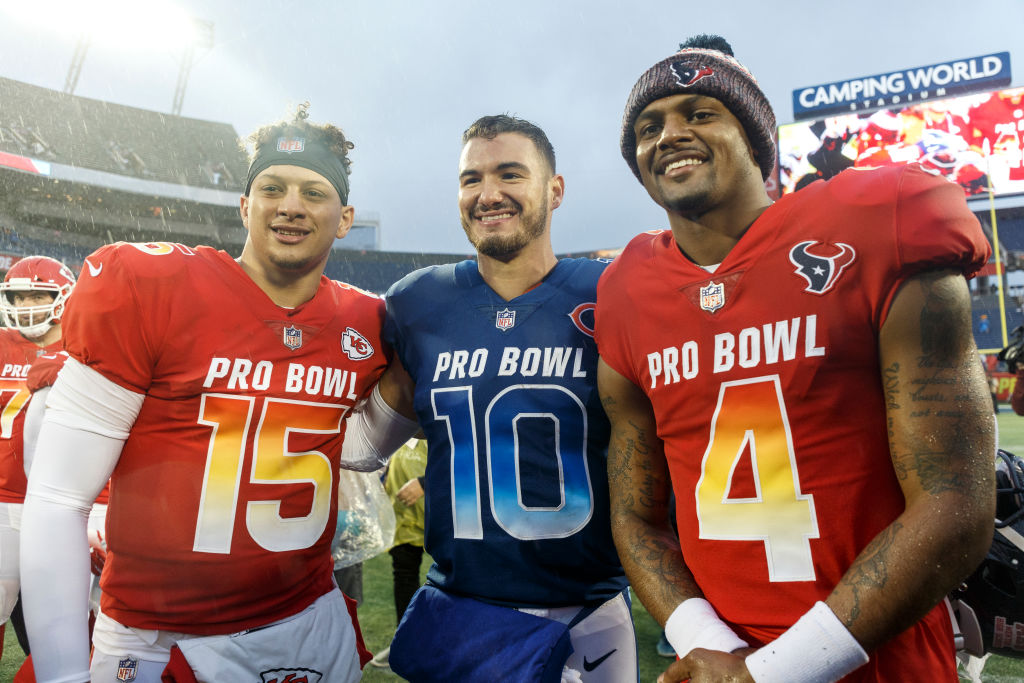NFL
How Much Are NFL Players Paid for Playing in the Pro Bowl?

While the NFL Pro Bowl should be a fun event, the annual all-star game is famously a dud. Since no one wants to get hurt in an exhibition, the event always lacks intensity; it doesn’t help that some of the league’s biggest stars decide to stay home, rather than suiting up. Those who do suit up, however, do get one additional bonus: an extra paycheck.
While the Pro Bowl isn’t a marquee event, everything the NFL touches always brings in money hand over fist. With that duality in mind, how much do players earn from appearing in the event?
The history of the NFL Pro Bowl
While it wasn’t always called the Pro Bowl, the NFL has played an all-star game for quite a while. The tradition actually began in 1939; the format, however, was a bit different.
In its earliest incarnation, the NFL’s “Pro All-Star Game” featured two teams; they weren’t both all-star teams, though. The defending league champion would battle against the rest of the league’s best players for bragging rights. That game lasted for four seasons before World War II made the annual tradition impossible.
In 1950, however, the all-star game was revived and given its current “Pro Bowl” moniker. That game was essentially the same as the modern event; two teams, one representing each conference, met to see which side reigned supreme. The Pro Bowl started out in the Los Angeles Coliseum, then called a few other cities home, before settling in Hawaii.
While the event remained more or less the same for several decades, the NFL has made some changes in recent years. For a few seasons, teams were built in a fantasy draft, rather than being divided by conference; the game has also left Aloha Stadium for Orlando, Florida.
Over the years, however, one reality has been constant: no one really cares about the Pro Bowl.
How much are Pro Bowl players paid?
Over the course of an NFL season, players receive game checks in addition to various incentivized payments and bonuses. Making the Pro Bowl also earns you another paycheck.
While some players have Pro Bowl bonuses baked into their contracts, every all-star is paid for their appearance in the game. Members of the losing team will take home an additional $35,000, while the winning squad will each earn $70,000 for the day’s work.
Although those might not sound like sizable sums compared to some of the league’s biggest contracts, those wages actually compare favorably to the NFL’s playoff pay. During the postseason, each player’s game check depends on the round; players can earn as little as $28,000 in Wild Card Weekend or as much as $124,000 if they play in, and win, the Super Bowl. By appearing in the Pro Bowl, you’re taking home more money than you would from a Wild Card or Divisional Round playoff game.
Even a nice payday can’t make the game relevant
On paper, the Pro Bowl salary-structure makes sense; if you want the game to be relevant, you need to make it worth the players’ while. Unfortunately, even $75,000 can’t change the reality of the annual all-star game.
Football, for better or worse, is defined by its physicality. That physicality is fundamentally incompatible with an exhibition game. While the NFL could lean into that reality and make the game a spectacle, they try to keep the Pro Bowl close to ‘real football’ while limiting dangerous behavior. That leaves us with the worst of both worlds; the game isn’t enough of a spectacle to be exciting nor enough of a legitimate contest to be worth watching.
The NFL has the right idea by trying to motivate players to show up and take the Pro Bowl seriously. The game’s format, though, makes even the most exciting players seem lackluster.











